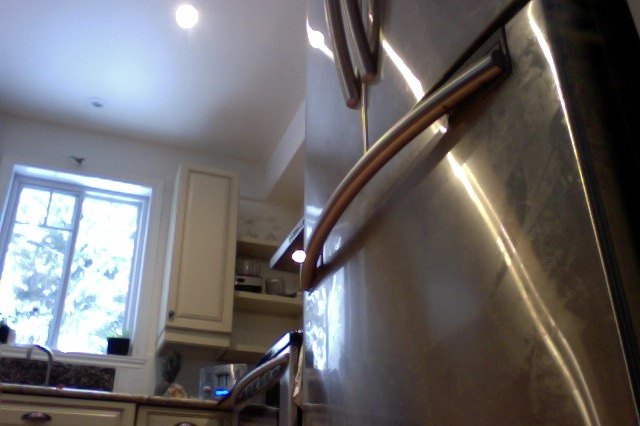It is enough to wipe the outer surface of a newly purchased refrigerator with a sponge moistened with soapy water — this will eliminate germs and factory dust. But during operation, various stains and dirt may appear on the refrigerator, especially if it is located next to the stove — in the latter case, grease spots will regularly appear on the surface of the equipment.
We have prepared a list of recommendations, following which you will quickly wash off even the most stubborn stains and grease stains on the refrigerator.

Photo: angeliccleaningco.com
General recommendations
You can wash the surface of the device as follows:
- Contaminated pens are well washed with toothpaste. It is also enough to wipe them with detergent and rinse it off;
- The surface of the refrigerator is well washed with window cleaners, ammonia;
- If the refrigerator has a metal surface, wash it with soapy water. Aggressive means cannot be used, otherwise the technique may change color, become stained, and the paint may crack;
- If the refrigerator has a glass surface, a window cleaner will do. Gently wipe it with a soft microfiber cloth;
- Dry the surface thoroughly after washing. If this is not done, ugly smudges will form on it.
When washing equipment, do not:
- use a hard sponge, soda — otherwise unsightly scratches will appear on the surface;
- use means for cleaning plumbing, whiteness — this will lead to the appearance of yellow spots;
- use abrasive and chlorine-containing products — they will violate the integrity of the outer layer, lead to rust, and the paintwork may swell;
- leave detergents on the surface of the equipment for a long time — otherwise the paint will swell.
Refrigerator cleaners

Photo: thespruce.com/
Today there are store-bought products for washing such equipment — for example:
- Unicum. You can use it to clean the outside of the device. It gently cleans the surface, eliminates third-party odors, and prevents the formation of mold and bacteria. Also, the use of Unicum forms a special layer on the surface, so that the refrigerator stays clean longer;
- hg. The product is also used to clean equipment inside and out. After its application, there are no streaks on the surface. The tool eliminates third-party odors, dirt, stains. It is not necessary to wash it off with water;
- Technical soda for cleaning equipment (non-food). This is a universal tool that is useful, including when washing the refrigerator. Pour soda into a deep container, add heated water to a mushy state. Next, apply the product to the cloth, attach it to the dirt for 5 minutes and wipe it with a non-rigid moistened sponge.
Folk remedies for washing the refrigerator
If there is no store-bought product at hand, use folk methods for cleaning the refrigerator:
- Laundry soap. Add soap shavings to a bowl of hot water and stir until a viscous mass appears. Using a soft sponge, apply the solution to the surface of the device, leave it for 5 minutes and rinse well. After that, wipe the technique with a lint-free cloth — for example, gauze;
- Table vinegar and ethyl alcohol. Dilute the products in half with water and wipe the surface of the equipment with a solution;
- If there are spots on the surface (for example, drops of oil), soak a cotton swab in undiluted vinegar or alcohol and apply it to the stain for 2–3 minutes. When the cotton wool becomes dirty, repeat the procedure with a new cotton swab. Carry out these actions until the stain disappears completely;
- A mixture of ammonia (2 drops) and toothpaste. Apply the resulting product to a non-rigid sponge and wipe the surface of the equipment with it;
- Hydrogen peroxide. Soak a cotton pad in it and wipe the surface. You may have to repeat the procedure up to 5 times. Then rinse it with water and dry it with a soft dry cloth.
How to remove traces of glue

Photo: hometalk.com/
Often stickers and stickers are hung on the refrigerator — after removing them, traces of glue appear on the surface. You can get rid of them like this:
- Wet the label with warm water before peeling it off for 5 minutes;
- then wipe this area with the hard side of the sponge moistened with soapy water;
- Moisten a cotton swab with alcohol or solvent, remove any remaining glue.
Before using solvent or alcohol, test it on an inconspicuous area of the refrigerator. Make sure that such products do not lead to tarnishing of the color of the technique. If the color has changed, they cannot be used.
You can also heat the sticker with a hair dryer, and then wash it with alcohol or a sponge moistened with soapy water. Another way is to soak the sticker in vegetable oil/vinegar for 5–10 minutes and scrub it off with a soft soapy sponge.
Refrigerator Care Tips
If a new stain has just formed on the surface of the device (for example, drops from sunflower oil have fallen on the surface), remove it immediately. Fresh stains are removed much faster than dried ones.
If the children drew on the surface of the refrigerator with a marker, then it all depends on its base:
- A solution of laundry soap will cope with a water-based marker;
- Alcohol-based — alcohol (before that, test the alcohol on an inconspicuous area of the equipment);
- In difficult cases, white spirit will help.
-
Toothpaste can also wipe off the inscription.
Often, liquid appears inside the refrigerator, which flows onto the sealing gum. Also, crumbs, pieces of food often accumulate on it, the decay of which causes a pungent odor. A solution with soap or baking soda, ammonia, glycerin are suitable for washing seals.
But if the seal has become inelastic, has begun to crumble and crack, then it must be replaced. The low quality of these elements leads to the fact that they begin to move away, and the cold from the chamber will get out. Too high a temperature will arise inside, which will lead to rapid deterioration of the products, to the breakdown of the refrigerator itself.

Добавить комментарий
Для отправки комментария вам необходимо авторизоваться.